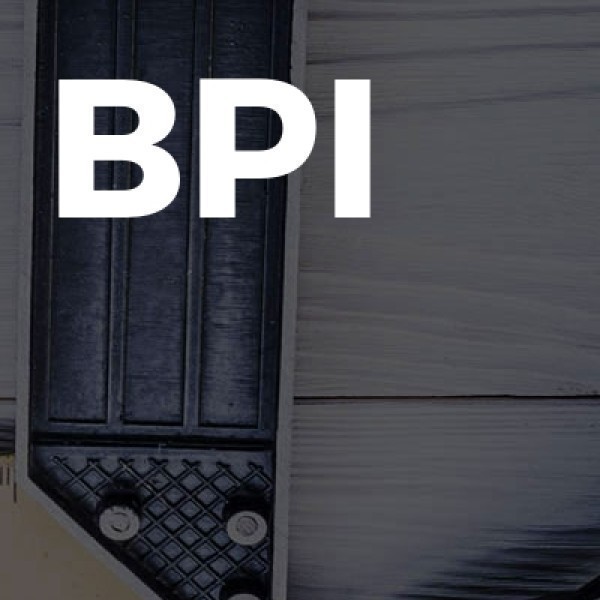Loft Conversions in Skegness
Filter your search
Post your job FREE and let trades come to you
Save time by filling out our simple job post form today and your job will be sent to trades in your area so you can sit back, relax and wait for available trades to contact you.
Post your job FREESearch Loft Conversions in places nearby
Understanding Loft Conversions in Skegness
Loft conversions in Skegness have become a popular choice for homeowners looking to maximise their living space without the hassle of moving. With the town's charming coastal setting and growing community, it's no wonder that more people are opting to transform their unused lofts into functional and stylish living areas. In this article, we'll explore the ins and outs of loft conversions, providing you with all the information you need to make an informed decision.
What is a Loft Conversion?
A loft conversion is a process of transforming an empty attic space into a functional room, such as a bedroom, office, or playroom. This type of home improvement not only adds value to your property but also provides additional living space without the need for an extension. In Skegness, where space can be at a premium, loft conversions offer a practical solution for growing families or those seeking extra room.
Benefits of Loft Conversions
There are numerous benefits to converting your loft, including:
- Increased Property Value: A well-executed loft conversion can significantly boost your home's market value.
- Additional Living Space: Whether you need an extra bedroom, a home office, or a play area for the kids, a loft conversion provides the space you need.
- Cost-Effective: Compared to moving house or building an extension, loft conversions are often more affordable.
- Energy Efficiency: Modern loft conversions can improve your home's insulation, reducing energy bills.
- Customisation: Tailor the space to your specific needs and tastes, creating a unique area that reflects your style.
Types of Loft Conversions
There are several types of loft conversions to consider, each with its own advantages:
Dormer Loft Conversion
A dormer loft conversion involves extending the existing roof to create additional headroom and floor space. This type is popular in Skegness due to its versatility and ability to blend seamlessly with various architectural styles.
Mansard Loft Conversion
Mansard conversions involve altering the roof structure to create a flat roof with a slight slope. This option provides maximum space and is ideal for properties with limited headroom.
Hip to Gable Loft Conversion
This conversion is suitable for semi-detached or detached homes with a hipped roof. It involves extending the roof's ridge line to create a vertical gable wall, increasing the loft's usable space.
Velux Loft Conversion
Also known as a roof light conversion, this option involves installing Velux windows into the existing roof structure. It's the most cost-effective and least disruptive type of conversion, perfect for those on a budget.
Planning Permission and Building Regulations
Before embarking on a loft conversion in Skegness, it's essential to understand the planning permission and building regulations involved. While many loft conversions fall under permitted development rights, certain conditions must be met:
- The conversion must not exceed 40 cubic metres for terraced houses or 50 cubic metres for detached and semi-detached houses.
- No extension beyond the existing roof slope on the principal elevation.
- No balconies, verandas, or raised platforms.
Building regulations ensure the conversion is structurally sound and safe. Key areas include fire safety, insulation, and staircase design. Consulting with a professional architect or builder can help navigate these requirements.
Choosing the Right Contractor
Selecting the right contractor is crucial for a successful loft conversion. Here are some tips to help you make the right choice:
- Experience: Look for contractors with a proven track record in loft conversions, particularly in Skegness.
- References: Ask for references or check online reviews to gauge customer satisfaction.
- Insurance: Ensure the contractor has adequate insurance coverage to protect against potential damages.
- Quotes: Obtain multiple quotes to compare pricing and services offered.
- Communication: Choose a contractor who communicates clearly and is willing to answer your questions.
Design Considerations for Loft Conversions
Designing your loft conversion involves several key considerations to ensure the space is both functional and aesthetically pleasing:
Lighting
Maximise natural light with strategically placed windows or skylights. Consider the direction of sunlight and how it will affect the room throughout the day.
Insulation
Proper insulation is crucial for maintaining a comfortable temperature and reducing energy costs. Invest in high-quality materials to ensure long-term efficiency.
Flooring
Choose durable flooring that complements the overall design. Options include hardwood, laminate, or carpet, depending on your preferences and budget.
Storage Solutions
Incorporate clever storage solutions to make the most of the available space. Built-in wardrobes, shelving, and under-eaves storage can help keep the room organised and clutter-free.
Cost of Loft Conversions in Skegness
The cost of a loft conversion in Skegness can vary depending on several factors, including the type of conversion, the size of the space, and the materials used. On average, you can expect to pay between £20,000 and £50,000. It's essential to budget for additional expenses such as planning permission, building regulations, and any unforeseen issues that may arise during construction.
Financing Your Loft Conversion
There are several financing options available for loft conversions, including:
- Personal Savings: Using your savings is the most straightforward way to finance the project without incurring debt.
- Home Improvement Loans: Many banks and lenders offer loans specifically for home improvements, often with competitive interest rates.
- Remortgaging: Remortgaging your home can provide additional funds for the conversion, although it's essential to consider the long-term financial implications.
- Government Grants: Check if there are any local or national grants available to support energy-efficient home improvements.
Common Challenges and Solutions
While loft conversions offer numerous benefits, they can also present challenges. Here are some common issues and their solutions:
Limited Headroom
Solution: Opt for a dormer or mansard conversion to increase headroom and create a more spacious environment.
Access and Staircase Design
Solution: Work with an experienced architect to design a staircase that maximises space and complies with building regulations.
Structural Integrity
Solution: Conduct a thorough structural assessment to ensure the existing framework can support the conversion. Reinforce as necessary.
Environmental Impact of Loft Conversions
Loft conversions can have a positive environmental impact by improving your home's energy efficiency. By incorporating sustainable materials and energy-efficient designs, you can reduce your carbon footprint and contribute to a greener future. Consider using eco-friendly insulation, energy-efficient windows, and renewable energy sources to power your new space.
Case Studies: Successful Loft Conversions in Skegness
To inspire your own project, here are some examples of successful loft conversions in Skegness:
Coastal Retreat
This loft conversion transformed a small attic into a serene bedroom with stunning sea views. The use of light colours and natural materials created a calming atmosphere, perfect for relaxation.
Family Playroom
A growing family converted their loft into a vibrant playroom, complete with built-in storage and a reading nook. The space is both functional and fun, providing a dedicated area for children to play and learn.
Home Office Haven
With remote work becoming more common, this homeowner converted their loft into a stylish home office. The design incorporated ample natural light, ergonomic furniture, and smart storage solutions to create a productive workspace.
Frequently Asked Questions
- Do I need planning permission for a loft conversion in Skegness? Most loft conversions fall under permitted development rights, but it's essential to check with your local council to ensure compliance.
- How long does a loft conversion take? The duration varies depending on the complexity of the project, but most conversions take between 6 to 12 weeks to complete.
- Can I live in my home during the conversion? Yes, most homeowners can remain in their homes during the conversion, although there may be some disruption.
- Will a loft conversion add value to my home? Yes, a well-executed loft conversion can significantly increase your property's value.
- What is the best type of loft conversion for my home? The best type depends on your home's structure, budget, and personal preferences. Consult with a professional to determine the most suitable option.
- How can I ensure my loft conversion is energy efficient? Use high-quality insulation, energy-efficient windows, and consider renewable energy sources to power the space.
In conclusion, loft conversions in Skegness offer a fantastic opportunity to enhance your living space and add value to your home. By understanding the different types of conversions, planning requirements, and design considerations, you can create a beautiful and functional space that meets your needs. With careful planning and the right contractor, your dream loft conversion can become a reality.
















